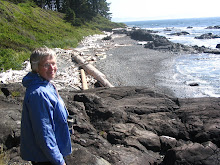Image by kern.justin via Flickr
Conclusion
Through this presentation, I have learned much more about the sharing phase of inquiry learning. I wanted to create a resource for myself and others to use when their students reach the Sharing phase. Only as the sponge is squeezed out (remember my image from the first blog post) can others benefit from the refreshment that comes from the sponge. Students who learn how to share their learning will be welcome anywhere. As well, as the sharing takes place, a community of learners is formed.
Throughout my search for information on sharing learning, I came across some amazing projects. I was really impressed with both of the following projects. Both involved authentic learning and both projects made a difference as they were shared within and beyond the immediate community of learners. I am using references to both of these projects to frame the questions for this Sharing Phase of Inquiry Learning.
According to Focus on Inquiry, authentic learning “involves going beyond active learning to challenge and solve complex problems and construct new meaning that is grounded in real-world experience. Students are challenged to create new knowledge, to answer a question, to develop a solution or to support a position or point of view based on real-world problems” (2004, p. 109)The young people on this video were involved in real-life learning as they studied their run-down neighbourhood in Chicago. The YouMedia project at the Chicago Public Library gave these teens a place to hang out, mess around, and geek out. They joined inquiry projects and borrowed equipment from the library to capture and share their new knowledge.
World Habitat Day Presentation from YOUmedia on Vimeo.
Question 2: A teacher at King Middle School in Portland, Maine which created the Fading Footprint video below (viewing optional) said that "Every kid has their own finish line" when it comes to inquiry learning. Do you agree or disagree with this statement? How would this concept impact on the sharing phase of guided inquiry?Fading Footprint Video from King Middle School, Portland, Maine
(For more about this project, visit http://www.edutopia.org/king-middle-school-expeditionary-learning)
References:
Alberta Learning (2004). Focus on inquiry: A teacher’s guide to implementing inquiry-based learning. Edmonton, AB: Alberta Learning. Available at http://www.education.gov.ab.ca/k_12/curriculum/bySubject/focusoninquiry.pdf
Knodt, Jean. (Oct. 2009). Cultivating Curious Minds: Teaching for Innovation through Open-Inquiry Learning. In Teacher Librarian, Vol. 37, Iss. 1, pp. 15-21.
Kuhlthau, Carol, Maniotes, Leslie, & Caspari, Ann. (2007). Guided Inquiry: Learning in the 21st Century. London: Libraries Unlimited.





No comments:
Post a Comment